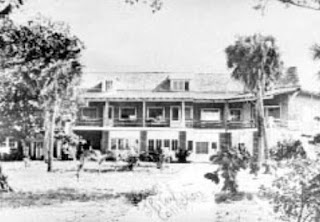
1300 SE 10 Ave.
Fort Lauderdale, FL 33315
954-828-7050.
https://www.parks.fortlauderdale.gov/programs/cemeteries
Grave markers at Fort Lauderdale’s Evergreen Cemetery summon up thoughts about the city’s pioneer days. Many pioneers, as well as recent
notables, lie in rest here.
According to the city, Evergreen Cemetery is one of its oldest. Before Fort Lauderdale was incorporated as a town in 1911, some residents were buried at a graveyard that later served as the site of South Side School on South Andrews Avenue.
In 1910 or 1911, pioneers Ed and Susan King carved out a section of their 90 acres for the cemetery. Near today’s Rio Vista neighborhood, it is bordered by Cliff Lake to its east. The city of Fort Lauderdale purchased the cemetery in 1917 for $2,000 and added to it with subsequent land buys. Evergreen Cemetery now occupies 11 acres.
Some graves serve as the final resting place of veterans including Civil War Medal of Honor recipient Edgar Bras from Iowa (search for post about him on this blog). A few veterans’ graves were moved from the old South Andrews site, so their markers display dates that predate that of Evergreen Cemetery. A small section was set aside for Jewish residents, including Isadore “Pop” Sterling who owned an early Las Olas clothing store.
Other names should ring familiar: pioneers Frank and Ivy Stranahan, Philemon Nathaniel Bryan, Tom Bryan, City Attorney George W. English II, Logan T. Brown of Brown’s Good Food, gathering place for Fort Lauderdale’s influencers; former Mayor Virginia Shuman Young, early Judge Fred Shippey, third county judge Boyd H. Anderson, billionaire businessman H. Wayne Huizenga and actor-comedian Leslie Nielsen of the Airplane parody.
Evergreen is one of four cemeteries owned and maintained by Fort Lauderdale. The other three: Lauderdale Memorial Park, Sunset Memorial Gardens and Woodlawn (search for post about Woodlawn).
Evergreen Cemetery is a Florida State Heritage Site with a small, one-way road wending through grave markers. Roadside parking only. It’s a peaceful spot with gravesites still available. A brochure or map of Evergreen Cemetery with some graves listed resides at the URL above as well as hours of visitation. This cemetery is worth a visit.
Its east border, Cliff Lake, looks like an elongated waterway rather than a lake. It includes a city park at 1331 SE 12th Way that sits within an adjacent neighborhood.
.jpg) |
| Cliff Lake |

.jpg)
















